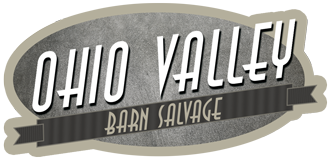Frequently Asked Questions
I have been taking down old barns since 2003, almost 14 years. Full time since 2013.
Yes we do and always furnish a current certificate before we start a project.
Yes we do and always furnish a certificate of liability insurance listing the owners as additional insured before we start a project.
Yes we do. It is a very detailed proposal listing a complete scope of work and payment terms.
Yes we do. We pay a deposit when the contract is signed and pay the owner in full before we start a project.
A bank barn has a full basement underneath it where typically animals were kept. Older barns usually have old milking stations. A ground barn has no basement and the barn was built on top of boulders or sandstone blocks. Older ground barn might have wood floors sitting on an undercarriage that is a couple feet of the ground.
Handhewn beams have what looks to be ax marks in the barn beams. There were made with an adz by the master barn builder and are found in barns before 1890. Circle sawn beams have a smooth surface and if you look closely you will see circle saw marks. Barns built starting late 1880’s have almost all circle sawn beams in them. The under carriage on saw mills became large enough to saw full length 40’ beams. Circle sawn barns are dated mostly from late 1880’s to mid 1900’s. After WWI most barn being built went to convention lumber.
Yes, but the barn must have enough value in lumber to perform this service. We have cleaned over 100 barns sites. Typically we rent a bulldozer and bury the excess wood into the ground.
We have sites that are over 10 years old and the farmers have been running their heavy equipment over the buried wood without any call backs. I guess we will go with, probably not!
Ohio forest are very diverse with many different species of wood. When a barn was built, the timber around the barnsite was felled and used. Timber was not brought in from other areas. The earliest timber barns are typically built from white oak that was readily available throughout Ohio. Starting in the early 1830’s , barns were built out of what was available closet to the barn site. You will find white and red oak, hickory, beech, ash , elm, walnut and even chestnut that is mostly found in central ohio area.
Ohio White Oak is the most sought after wood. This species of wood has closed cells which make it very moisture resistant. It is very strong durable wood. Chestnut, walnut and hickory are also highly desired. Wood species like red oak which has porous cells, have a tendency to decay ( rot) much faster than white oak. Beech is also very susceptible to moisture and has a tendency to also decay faster than most hardwoods.
Typically most have mixed hardwoods in them. In Morrow county( where I live) most barns are Beech. It is always a good day when you find an all White Oak barn.
No. At this time we are not buying circle sawn barns unless the timbers are 10"x10" or bigger.
Yes. Before 2016 OVBS just dismantled frames and sold them to other clients. Now we have frames available to sell. You can see all of our frames available for sale on our website.
Yes we do. We offer nationwide services.
Not at this time. Hoping to by late 2018.
We have found barns in the Dalton, East Canton dating back to the early 1820’s
Historic Barn Frames
Ohio Valley Barn Salvage specializes in purchasing & dismantling old barn frames along with salvaging barn materials. We package and ship barn frames all over the country for homes, restaurants, events space and more. In addition, we complete on-site reassembly and reconstruction of old barn frames.
Available Barn Frames Restoration Projects Sold Barn Frames